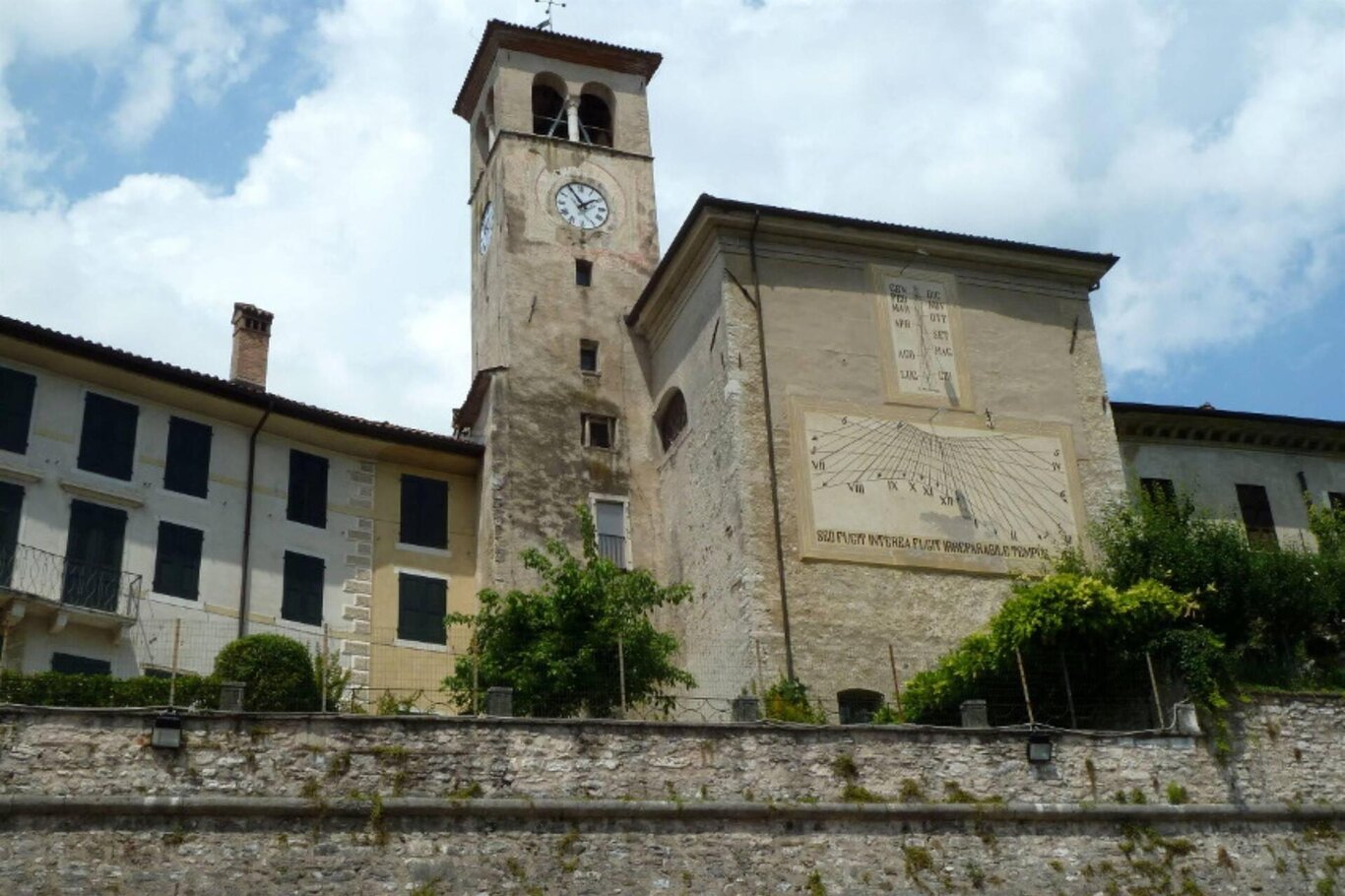The church of St. James was built at the beginning of the 15th century thanks to a bequest and has been maintained since its inception by the families of the neighborhoods of Mezzaterra and Paradiso, who were in fact its exclusive owners, and who still open it to the public every day.
Its current shape is due to the 19th-century renovation commissioned to Giuseppe Segusini and completed only in 1877; from the ancient building, only the entrance portal from 1481 and the frescoed lunette above it were preserved, the oldest external mural painting in the city. The church played a fundamental role during the Napoleonic invasion when many religious institutions were suppressed and their assets dispersed; the building became a sort of depot for works coming from the destroyed Feltre monasteries of Santa Chiara, Santo Spirito, and San Pietro in Vincoli.
The back of the church of St. James can be perfectly seen outside the city walls; once you exit from Porta Imperiale and turn left, you reach Via Roma which joins Campo Giorgio right under the church's apse which can be admired from here by looking up towards the hill and also observing the sundial that marks the time located on the back of the building.
Artworks:
The interior is dominated by the main altar made of polychrome marbles from the late 16th century, which arrived from the convent of Santa Chiara after its suppression in 1810; inside it is a panel featuring the Madonna with Child, St. James, and St. Martin by the Feltre painter Girolamo Lusa executed between 1521-1522. The two side altars, renovated according to Segusini's design, date back to 1853 and preserve, on the right, a canvas attributed to Pietro Cogorani depicting the Immaculate Conception with St. Francis of Paola and a saint bishop along with a wooden sculpture of the Pietà made in the Belluno area between the 17th and 18th centuries, and on the left a wooden statue of St. Anthony of Padua with the Child Jesus.
On the right wall of the nave, two niches house respectively a large and magnificent Crucifix made of lime wood painted, which arrived in 1808 from the suppressed Franciscan Convent of Santo Spirito, and the Custody of St. Theodora, an extraordinary work by the Belluno sculptor Andrea Brustolon executed in 1696 for the Augustinian nuns of the vanished monastery of San Pietro in Vincoli.
After World War II, the veneration of St. Rita of Cascia became rooted, due to the vow of a family that led to the transformation of the cellar into a crypt dedicated to her. On its walls, many have wanted to have their name or that of their deceased engraved. Here, Modolo painted two canvases and two frescoes depicting the most significant episodes of St. Rita's life. On May 22, the feast of the Saint, the church fills up for the numerous Masses and the statue is brought to the upper church and displayed for the devotion of the faithful, and blessings are given to the children. Blessed red roses of St. Rita are offered to the faithful.
